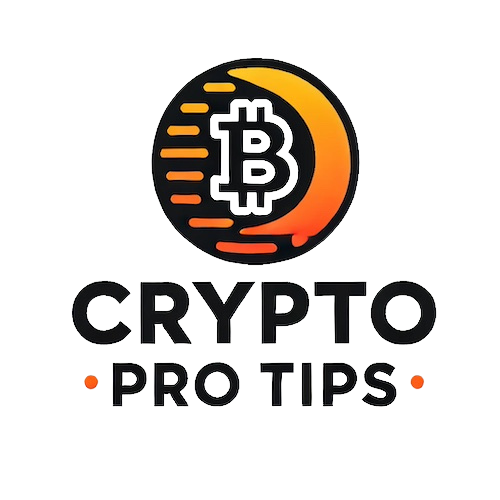Have you ever wondered what differentiates one blockchain platform from another? In a world where technology is rapidly evolving, blockchain stands as a beacon of innovation, promising to reshape industries from finance to healthcare. But with so many platforms available, choosing the right one can seem like navigating a labyrinth. Let’s embark on this journey together to explore various blockchain platforms, understanding their features, advantages, and use cases to help you find the path that’s right for you.
What is Blockchain?
To truly grasp the comparison between blockchain platforms, it’s essential to start with the basics. At its core, a blockchain is a decentralized digital ledger that records transactions across multiple computers. This ensures that the recorded data cannot be altered retroactively. You might think of it like a digital chain that links blocks of information securely.
Why Blockchain Matters
The significance of blockchain technology lies in its ability to enhance transparency, security, and efficiency. Unlike traditional databases, which are centralized and vulnerable to hacking, blockchains distribute information across a network, making it nearly impossible to manipulate. This leads to greater trust and reliability in digital transactions. Imagine having a diary where every entry is automatically verified and preserved—blockchain offers this level of integrity and trustworthiness.
Understanding Different Blockchain Platforms
When you hear the term “blockchain platform,” think of it as the underlying technology framework that supports decentralized applications and smart contracts. Each platform offers unique characteristics, and understanding them can help you harness their potential effectively.
Public vs. Private Blockchains
One of the primary distinctions among blockchain platforms is how they manage user access. Public blockchains, like Bitcoin and Ethereum, are open to anyone who wants to participate. On the flip side, private blockchains restrict access to specific participants. Consider public blockchains as inclusive community events, whereas private ones are more like exclusive gatherings.
Advantages of Public Blockchains
Public blockchains are prized for their openness and security. They often rely on consensus mechanisms like Proof of Work (PoW) or Proof of Stake (PoS), which help ensure agreement among participants about the network’s state. This openness creates an environment where innovation can thrive, much like an open market spurring entrepreneurial spirit.
Advantages of Private Blockchains
Conversely, private blockchains allow organizations to control who has access to their network. This can be useful for industries that require confidentiality, like healthcare or finance. Think of it as granting access to a gated community, where entry is restricted, ensuring security and privacy.
Consensus Mechanisms
At the heart of every blockchain platform is its consensus mechanism— the process by which transactions are verified and added to the ledger. This is akin to the voting system in a democracy, determining the outcome based on majority agreement.
Proof of Work (PoW)
Proof of Work is the most well-known consensus mechanism, used by Bitcoin. It requires network participants to solve complex mathematical puzzles to validate transactions. While it’s highly secure, you’d notice that it requires significant energy consumption, much like running week-long marathons regularly.
Proof of Stake (PoS)
Proof of Stake, utilized by newer platforms like Ethereum 2.0, uses a different approach, where validators are chosen based on the number of coins they hold and are willing to “stake” as collateral. Picture a system where influence is determined by commitment rather than brute force—a more eco-friendly and cost-effective method.
Delegated Proof of Stake (DPoS)
Delegated Proof of Stake is a variant in which stakeholders elect delegates to validate transactions, offering an additional layer of governance. You might compare it to a representative democracy, where citizens elect officials to make decisions.
Smart Contracts
Smart contracts are self-executing contracts with terms directly written into code. Imagine a vending machine—once you choose an option and pay, it delivers the product automatically without human intervention. Blockchain platforms featuring smart contracts automate processes, reducing the need for intermediaries.

Comparing Popular Blockchain Platforms
Let’s dive into a detailed comparison of some well-known blockchain platforms. We’ll explore their key features, strengths, weaknesses, and potential applications, giving you a comprehensive guide to these digital ecosystems.
Ethereum
Often hailed as the king of decentralized applications (dApps), Ethereum is a public blockchain known for its strong developer community and robust smart contract capabilities. It’s not just a cryptocurrency platform; it’s an evolving ecosystem driving innovation across various sectors.
Strengths
Ethereum’s primary strength lies in its ability to create and deploy smart contracts easily. This has led to a burgeoning dApp market, with use cases spanning finance, gaming, and supply chain management. It’s like having a robust app store where you can build and distribute your applications freely.
Weaknesses
However, Ethereum has been plagued by scalability issues, limiting its transaction throughput. This is akin to traffic jams in a bustling city. While the recent transition to Ethereum 2.0 aims to address these concerns, challenges remain.
Bitcoin
While Bitcoin is primarily known as a cryptocurrency, it’s important to appreciate its role as a pioneering blockchain platform. It’s the foundation on which the entire blockchain movement builds, and it remains a stalwart option for secure, decentralized value transfers.
Strengths
Bitcoin’s main advantage is its security, derived from its extensive network and PoW consensus mechanism. This makes it incredibly resistant to attacks, like a fortress with unbreachable walls. Additionally, its brand recognition contributes to its enduring dominance as a digital currency.
Weaknesses
Bitcoin’s limitations include the lack of programmability found in platforms like Ethereum, meaning it can’t support smart contracts in the same way. Its energy consumption also poses environmental concerns, much like an ancient castle requiring constant upkeep.
Binance Smart Chain (BSC)
A relatively new player on the scene, Binance Smart Chain offers scalability and low transaction fees. It’s emerged as a popular platform for DeFi (Decentralized Finance) applications, attracting users seeking cost-effective alternatives.
Strengths
The allure of BSC lies in its fast transaction speeds and affordable fees, which are especially appealing in the DeFi world. Picture a bustling marketplace where trades happen quickly and cheaply—this encapsulates BSC’s offering.
Weaknesses
Despite its strengths, BSC faces criticism for its centralized nature, given its ties to the Binance exchange. For purists seeking decentralization, this can seem like a metropolis controlled by a few key players rather than grassroots governance.
Cardano
A platform with a strong focus on security, scalability, and sustainability, Cardano aims to solve some of the blockchain ecosystem’s inherent issues. It bases its development on a peer-reviewed academic approach, promising rigor and reliability.
Strengths
Cardano distinguishes itself with a layered architecture and a scientific approach to development. This makes it adaptable to changing demands without compromising security, much like a well-designed building with room for expansion.
Weaknesses
However, Cardano is still in its early stages, lacking the same level of adoption and ecosystem maturity as Ethereum or Bitcoin. It’s like a meticulously designed blueprint that has not yet seen the full construction of its vision.
Polkadot
Polkadot introduces the concept of interoperability, connecting multiple blockchains into a single network. This enables data and assets to transfer freely between platforms, a revolutionary idea in a fragmented blockchain landscape.
Strengths
The platform’s interoperability is its hallmark feature, akin to a world where different languages are no longer a barrier to communication. This can support cross-chain transfers and collaborations, creating new possibilities for developers and users alike.
Weaknesses
However, Polkadot’s complexity can be daunting for newcomers, requiring a steeper learning curve. Imagine learning a new language—initial progress might be slow, but mastery could open up a world of opportunities.
Comparison Table
To help you compare these platforms more directly, here’s a table summarizing key features:
| Platform | Consensus Mechanism | Strengths | Weaknesses |
|---|---|---|---|
| Ethereum | PoS | Smart contracts, dApps | Scalability issues |
| Bitcoin | PoW | Security, brand recognition | Lack of programmability, energy use |
| Binance Smart Chain | PoA (Proof of Authority) | Low fees, fast transactions | Centralization concerns |
| Cardano | Ouroboros PoS | Security, scientific approach | Limited adoption |
| Polkadot | PoS | Interoperability | Complexity |
Factors to Consider When Choosing a Blockchain Platform
Choosing a blockchain platform involves weighing several factors, much like evaluating the ingredients for a perfect recipe. Let’s explore what you should keep in mind.
Scalability
Scalability is crucial if you anticipate high transaction volumes. It’s about ensuring your platform can handle increased demand, akin to ensuring a restaurant has enough staff for a sudden influx of diners.
Security
Security is paramount, as blockchain assets often hold significant value. Look for platforms with robust security mechanisms, much like selecting a bank with advanced safety measures.
Community Support
A strong developer community can significantly influence a platform’s success. The contributions and innovations from a vibrant community can drive improvements and spawn new projects, similar to how a city’s growth relies on the engagement and creativity of its residents.
Costs
Transaction fees, or gas fees, can impact user experience and profitability. Consider this as you would the cost of living in a city—cheaper isn’t always better, but it needs to fit within your budget.
Ecosystem and Use Cases
Evaluate the platform’s ecosystem and existing use cases to see if they align with your goals. It’s like discovering a neighborhood that offers the amenities and lifestyle you desire, ensuring long-term satisfaction.

Future Trends in Blockchain Platforms
Looking forward, several trends are shaping the evolution of blockchain platforms, much like emerging technologies influence urban development. Let’s take a peek at these transformative forces.
Interoperability
As blockchain ecosystems grow, connecting disparate platforms becomes essential. Interoperability enables seamless data and asset exchanges, forging connections akin to bridges linking separate parts of a city.
Environmental Sustainability
The environmental impact of blockchain, particularly energy-intensive platforms like Bitcoin, is a hot topic. Future platforms will likely focus on environmentally friendly consensus mechanisms, much like cities striving for greener infrastructure.
Enhanced Privacy Features
As privacy concerns mount in the digital world, blockchain platforms are exploring enhanced privacy features. Just as cities invest in security measures to protect citizens, platforms seek to safeguard user data.
Central Bank Digital Currencies (CBDCs)
CBDCs represent a merging of traditional finance and blockchain technology. These digital currencies could redefine financial systems, much like urban planners redesign transport networks to accommodate growing populations.
Conclusion
Navigating the vast landscape of blockchain platforms can be daunting, but understanding the unique strengths and challenges of each option can guide your decision-making process. Whether you’re drawn to Ethereum’s dApps, Bitcoin’s security, Binance Smart Chain’s affordability, Cardano’s scientific rigor, or Polkadot’s interoperability, each platform presents distinct opportunities. Consider your needs and goals, much like choosing a city that aligns with your lifestyle, and embark on your blockchain journey with confidence.

